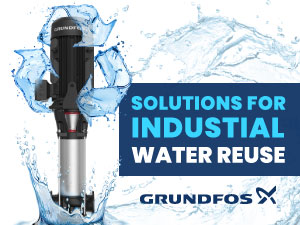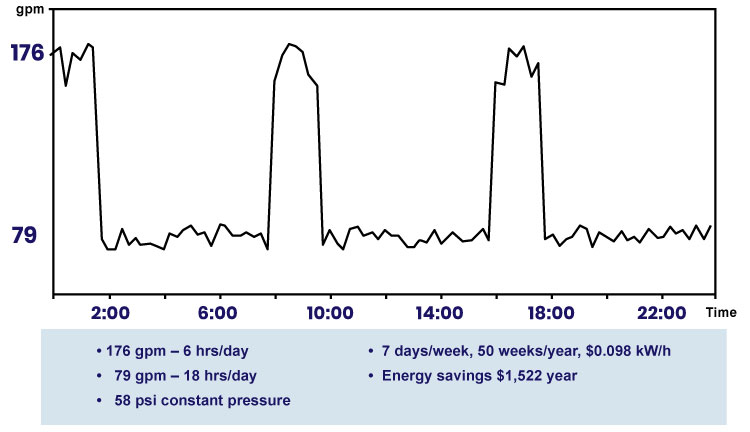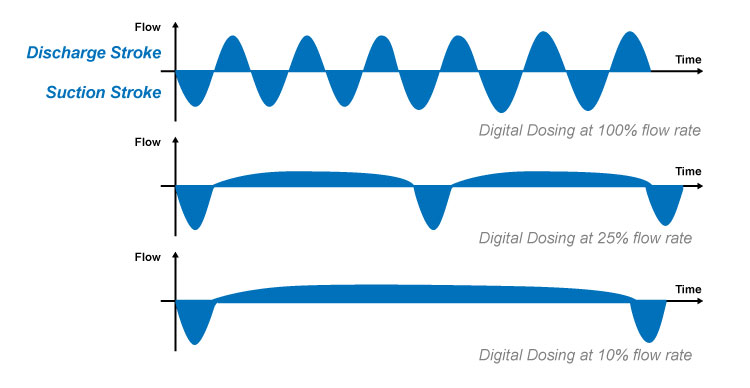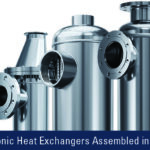Solutions For Industrial Water Reuse
Marco Witte and Pablo Andres Tojo, Grundfos Pumping Solutions

Learn more about today’s quality and sustainable water treatment solutions within restorative industrial process applications
Introduction: Water is such a fundamental necessity for life that it is often taken for granted. In modern industrial plants, water must be of the right quality to meet the needs of its intended purpose. Mankind is becoming increasingly aware that fresh water is a rarity, and this rarity drives the need for reuse in order to mitigate problems associated with scarcity, costs, and regulations. Water consumption in the industrial market contributes greatly to global water consumption, and therefore requires a special focus.
Purpose: The purpose of this white paper is to introduce the topic of Industrial Water Reuse, describe the specific processes within this area of water treatment, and provide a vision for the future.
BACKGROUND TO WATER REUSE
In industrial markets, water plays an important role as solvents, cooling liquids, wash and clean liquids, and more. Whenever we use water, we change the content, thus changing the water quality. The process water then needs to be treated or recycled before reuse to avoid contaminating the water cycle with industrial substances. A general cycle of water usage and treatment is shown below:

WATER REUSE PROCESS
The process generally consists of the following stages:
![]()
WASTEWATER TRANSPORT
After the different uses in the industrial utilities or processes, the water is transported toward the treatment facility. Depending on the water chemistry and the particle content, different transport pumps are available. Depending on the water condition, different materials of construction must be chosen. For example, stainless steel is used when high chloride content is present.
BIOLOGICAL TREATMENT
In industrial and municipal treatment plants, biological treatment with bacteria plays an important role when it comes to treating wastewater. In this step, the nitrogen content, Biological Oxygen Demand (BOD), and Chemical Oxygen Demand (COD) are treated to lower the concentration of N and P values. Sometimes this step is combined with a physical step to separate particles out of the water. Membrane Bioreactors are often used if some of the water isn’t reused but is released into the environment.
WASTEWATER RELEASE
As described above, after this step, parts of the wastewater can be released based on compliance with local regulations. It is often released into a river or another surface water source. In some areas, a disinfection step is included in this part of the process, based on local laws and regulations.
CHEMICAL AND PHYSICAL TREATMENT
If more extensive treatment is needed, the next step can either be chemical or physical treatment. In this step the water is conditioned in terms of pH, coagulants are used in order to improve physical treatment, all particles are removed, membranes are applied, and both ultrafiltration and reverse osmosis treatment are employed in order to prepare the water for the last step of the concentrate treatment.
CONCENTRATE TREATMENT
Concentrate treatment can be a challenging water treatment process. High energy demand and high ion concentrations are the two main challenges, along with a relatively small amount of water. This step is often done via Reverse Osmosis (RO) and crystallization. Challenges for RO applications include high pressure and the water chemistry requirements, which can be a challenge for the membranes and other system components, such as pipes, valves, and pumps. Note that crystallization is a process to extract the last vestiges of water using high temperature.
CONTROL SYSTEMS
Throughout the entire process, different measuring and control functions help provide reliable results. Typically, hydraulic parameters such as temperature, flow and pressure, or chemical parameters such as pH, turbidity, conductivity and Total Organic Carbon (TOC) are measured. BOD & COD, Phosphate and the Nitrogen parameters are the most important ones when it comes to wastewater regulations.
The overall process control is important for every treatment application. Normally, a PLC analyzes all measured signals from different process steps and controls the process to ensure successful, accurate treatment. Standard data communication such as Profibus or Ethernet is normally used to transfer this data. Newer technology includes advanced process control systems, such as cloud solutions and automated remote management.
A direct link from the process step to the required pump solution is shown in the picture below:
error
SOLUTIONS IN WATER REUSE
As described above, chemical and physical treatment is important to a water reuse process. Very often it is the particle removal step that is the heart of the process, as proper pre-filtration is key to a sustainable and reliable operation of the following process steps.
A complete portfolio of state-of-the-art pumps and pump systems is available to not only make your Ultrafiltration (UF) system reliable and efficient but also ready for the future, including increasing demands in your water reuse process.
CHALLENGES
Major challenges in an ultrafiltration application can be:
- Changing raw water conditions (e.g. turbidity increase or decrease – both of which can be challenges)
- Changing demand on the clean water side
These challenges must be handled and solved with modern technology. Such a process will require a system in which components can be integrated for easy automation and proactive communication to quickly provide reliable information on water quality. At the same time, the process must be energy efficient and economical, with minimal environmental impact.
The pump system must be able to account for variability in influent water supply to the UF system. A good deal of variability can take place despite these being “fixed-flow units.” Changes in seasonal conditions, process fluctuations or even water supply restrictions can cause system variations. The right variable frequency drive (VFD) on a pump can help to control flow without wasting energy, such as with a throttling valve. Additionally, a drive can enable simple constant flow control for the membrane system regardless of changes in water supply or discharge pressure variability.
The basic affinity laws for pumps and motors shows that by reducing motor speed, you decrease energy consumption to the third power. End-users often use a throttling valve to decrease flow on a fixed speed pump. This practice wastes large amounts of energy and money – a problem that is worsened when pumps are oversized during the design phase.
Furthermore, throttling a valve will move a pump down the efficiency curve, so the pump is less efficient and its power draw is higher. A drive allows you to dial in the exact flow and pressure requirement and save large amounts of energy at better efficiencies.

COMPLEXITY REDUCTION AND SAVINGS
A VFD driven pump can dramatically reduce the number of different pump designs used to manage different RO/UF system sizes. This standardization on fewer pump sizes, each with more flow flexibility, will help system manufacturers reduce complexity and costs while easing design needs. It can also benefit an end-user with multiple systems or membrane trains by offering additional savings in maintenance and spare-parts costs.
Some manufacturers will ship membrane systems to other countries with different power requirements. A VFD can allow for 50 or 60 Hz power and still run the standard pump motor. This can save in the complexity and cost of different power variants for membrane systems for global use. Moreover, a smart booster pump also softens the start-up and shut-down of flow. This eliminates powerful water forces that can, under some circumstances, increase wear of membranes in a system.
All membranes will eventually foul and require cleaning; however, as membranes clog, the pressure requirements to treat water at the same flow rate increases. Without a VFD, a system with a fixed-speed pump will begin to deliver less than the rated permeate flow. A modern drive and pump can account for pressure changes easily, allowing them to operate longer between cleanings without a loss in production flow, provided that the filtered water continues to meet quality requirements.
Choosing the right drive and pump selection can help the end-user to plan for future system enhancements. This could include changes to the membrane trains; newer, lower-pressure membranes; or process flow changes. This flexibility will make retrofits cheaper in the future, enabling the end-user to take advantage of new, sustainable solutions.
Newer pump products often include integrated drives, where a drive is optimized for, mounted on, and works together with the pump motor. This can lead to pumps with smaller motors, optimized for system performance, to ensure that the pump is protected. End-users should also look for a pump-designed drive: many drives on the market are generic to a variety of motor and driven equipment needs. A drive designed and matched for a specific model of pump can make installation and set-up easier and increase efficiency.1
CHEMICAL DOSING IN PRE-TREATMENT AND BACKWASHING
Ultra-filtration requires extremely accurate dosing rates of chemical additives. Modern digital dosing pumps can deliver the needed amount of chemicals with high precision.2
Looking at the diagram below, one can see the nearly continuous dosing flow, which is provided by the motor technology of the stepper motor, even with small volumes. You can see that as we slow down the dosing rate the period in which liquid is being discharged actually increases as a percentage of time.
STEPPER MOTOR CONTROL FLOW PROFILE

An integrated pressure sensor and flow monitoring algorithm controls the flow, which gives feedback about the actual flow in comparison to the set point. In addition, the smart digital pumps are modular for easy system integration. The available clear menu structures and the plain text menus provide the needed information about the status of the pump and eases the daily work burden on the system operators. System integration is easy with plug and pump systems where bus communication allows remote access to the dosing system.
Digitalization, connected systems, Big Data, and autonomous production are themes that are present in all boardrooms around the globe. In the water treatment industry, the fourth industrial revolution will impact the way we are treating water and how we handle and use data in the future. With connected systems, innovative uses of data, and algorithms to present data, anti-scalant usage will be optimized in RO systems. As we described above, membrane filtration systems are vital parts of the industrial reuse area. Also, in the future membrane processes will play their role. For example, the treatment of concentrate RO systems are becoming increasingly important, and these are tied closely to the new connective systems.
As new, innovative solutions, these smart RO systems work by analyzing data from standard sensors (pressure, temperature, and conductivity) present in an RO system. The sensors monitor the operation and will react to changes in membrane performance. Data from the sensors can be transmitted to and stored in either the dosing pump or a cloud server. Potentially both locations can be used for data storage (local or historical). These smart RO systems have two main characteristics: 1) Real-time data processing and visualization, and 2) digital intelligence-enhancing decision making for dosing.3
CONCLUSION
This white paper is intended to introduce the reader to the many elements that constitute the water reuse process. We hope that it has answered some of your questions, but of course, there is more to learn. The use of water varies from one industry to another, as there are several different applications within water treatment and industrial water reuse in which optimized solutions have been developed to make use of intelligent solutions.
As water scarcity increases, so will the need to recycle water. Industrial water treatment processes will play a significant role in ensuring a safe, sustainable future for the entire planet.
—
Sources:
Marco Witte and Pablo Andres Tojo, Grundfos Solutions for Industrial Water Reuse is the document on which this whitepaper is based
1 Harland Pond, Using Pump Variable Speed Drive Solutions in Membrane Filtration.
2 Jürgen Kiefer, How good is the Grundfos SMART Digital DDA FCM really? Comparative study of dosing precision and accuracy between SMART Digital DDA and the mechanical dosing pump DMI, University of Applied Sciences Weihenstephan-Triesdorf – Institute of Food Technology.
3 Marco Witte, Dr. Carsten Persner, and Victor Augusto Yangali-Quintanilla, MSc, PhD, Optimization of RO Systems through Digitalization, Connectivity and SMART Algorithms.
—
Graphics and Figures Courtesy of Grundfos




